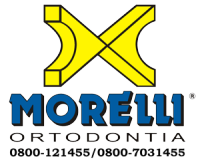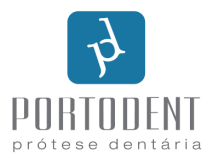ANÁLISE DA SENSIBILIDADE DOLOROSA À PALPAÇÃO DA MUSCULATURA MASTIGATÓRIA EM DIFERENTES PADRÕES DE CRESCIMENTO CRÂNIO-FACIAL
Resumo
O presente estudo teve como objetivo investigar o limiar de dor à palpação da musculatura mastigatória antes e depois da fadiga em diferentes padrões de crescimento crânio-facial. A amostra composta por 28 pacientes com ausência de disfunção temporomandibular foi dividida em dois grupos iguais e distribuídos de acordo com o seu padrão de crescimento crânio-facial. Foram considerados Hipodivergentes os pacientes com ângulo FMA menor que 19° e Hiperdivergentes os com FMA maior que 30°. O estado psicológico (depressão, ansiedade e somatização) foi avaliado através da Escala de Avaliação de Sintomas-90-R (SCL-90-R), enquanto que a qualidade do sono foi por meio do Questionário de Pittsburgh (PSQI). O limiar de dor à pressão foi mensurado através do Algômetro Digital Kratos DDK, aplicado no músculo masséter apenas no lado direito da face. Após exame de algometria inicial, um desafio mastigatório utilizando goma de mascar foi utilizado na tentativa de provocar a fadiga dos músculos mastigatórios durante mastigação contínua, seguida de nova mensuração do limiar dor à palpação por meio do Algômetro. Foi observada correlação (p = 0,021) entre escores mais altos de depressão com um baixo limiar de dor à pressão pós desafio de fadiga da musculatura mastigatória. O teste de correlação de Pearson demonstrou uma fraca correlação entre o limiar de dor à pressão e o padrão de crescimento crânio-facial, qualidade do sono, ansiedade e somatização. Pacientes com níveis mais altos de depressão apresentaram um limiar de dor à pressão mais baixo após desafio de fadiga da musculatura mastigatória, independente do padrão crânio-facial dos mesmos. Níveis mais altos de ansiedade e somatização, assim como uma má qualidade do sono parecem não refletir em uma maior susceptibilidade à dor pós desafio mastigatório.
Palavras-chave
Texto completo:
PDFRefer?ncias
Dworkin SF, Huggins kH, LeResche L, Von Korff M, Howard J, Truelove E, Sommers E. Epidemiology of signs and symptoms in temporomandibular disorders: clinical signs in cases and controls. J Am Dent Assoc. 1990 Mar;120(3):273-81.
Maillou P, Cadden SW, Lobbezoo F. The inhibitory effect of a chewing task on a human jaw reflex. Muscle Nerve. 2010;41(6):845-9.
Isselee H, De Laat A, Lesaffre E, Lysens R. Short-term reproducibility of pressure pain thresholds in masseter and temporalis muscles of symptom-free subjects. Eur J Oral Sci. 1997 Dec;105(6):583-7.
Ohrbach R, Gale EN. Pressure pain thresholds in normal muscles: reliability, measurement effects and topographic differences. Pain. 1989 June; 37(3):257-63.
Chung SC, Kim JH, Kim HS. Reliability and validity of the pressure pain thresholds (PPT) in the TMJ capsules by electronic algometer. Cranio. 1993 Jul;11(3):171-6.
Conti PC, dos Santos CN, Lauris JR. Interexaminer agreement for muscle palpation procedures: the efficacy of a calibration program. Cranio. 2002 Oct;20(4):289-94.
Visscher CM, Lobbezoo F, Naeije M -2004-. Comparison of algometry and palpation in the recognition of temporo-mandibular disorder pain complaints. J Orofac Pain 18:214219.
Cathcart S, Pritchard D. Reliability of pain threshold measurement in young adults. J Headache Pain. 2006 Feb;7(1):21-6.
Chaves TC, Nagamine HM, de Sousa LM, de Oliveira AS, Grossi DB. Comparison between the reliability levels of manual palpation and pressure pain threshold in children who reported orofacial pain. Man Ther. 2010 Oct;15(5):508-12.
Cabrera CA, Enlow DH. Crescimento e desenvolvimento craniofacial. Ortodontia clínica. Curitiba: Produções Inter-ativas, 1997. cap. 1, p. 1-41.
Hunt N, Shah R, Sinanan A, Lewis M. Northcroft Memo-rial Lecture 2005: muscling in on malocclusions: current concepts on the role of muscles in the aetiology and treat-ment of malocclusion. Journal of Orthodontics 2006;33(3):187-197.
Pullinger AG, Seligman DA, Gornbein JA. A Multiple Logistic Regression Analysis of the Risk and Relative Odds of Temporomandibular Disorders as a Function of Common Occlusal Features. J Dent Res 1993;72(6):968-979.
Seligman DA, Pullinger AG. The role of functional oc-clusal relationships in temporomandibular disorders: a re-view. J Craniomandib Disord. 1991;5(4):96-106.
Reis SAB, Abrao J, Capelozza Filho L, Claro CAA. Es-tudo comparativo do perfil facial de indivíduos Padrões I, II e III portadores de selamento labial passivo. R Dental Press Ortodon Ortop Facial 2006;11(4):36-45.
Capelozza Filho, L. Diagnóstico em ortodontia. Dental Press, 2004.
Guedes SP, Teixeira BV, Cattoni DM. Medidas orofaciais em adolescentes do estado do Rio de Janeiro segundo a tipologia facial. Rev Cefac, v. 12, n. 1, p. 68-74, jan./fev. 2010.
Gomes MB, Guimarães JP, Guimarães FC, Neves AC. Palpation and pressure pain threshold: reliability and va-lidity in patients with temporomandibular disorders. Cra-nio. 2008 Jul;26(3):202-10.
Sima FT. Validity and reliability of a new digital algometer to detect extra and intra oral pressure pain threshold in mi-ofascial and TMJ pain. Biblioteca Digitais de Teses e Dis-sertações da USP
Silva RS, Conti PC, Lauris JR, da Silva RO, Pegoraro LF. Pressure pain threshold in the detection of masticatory myofascial pain: an algometer-based study. Journal of Orofacial Pain. Vol 19, N 4, 2005.
Farella M, Bakke M, Rapuano A, Martina R. Masseter thickness, endurance and exercise-induced pain in subjects with different vertical craniofacial morphology. Eur J Oral Sci 2003; 111: 183188.
Stuginski-Barbosa J, Silva RS, Cunha CO, Bonjardim LR, Conti AC, Conti PC. Pressure pain threshold and pain perception in temporomandibular disorder patients: is there any correlation? Rev. dor vol.16 no.1 São Paulo Jan./Mar. 2015
Eccleston C. A normal psychology of chronic pain. Psy-chologist. 2011; 24: 422425
Cordeiro IB, Guimarães AS. Profile of patients with tem-poromandibular joint disorder: Main complaint, signs, symptoms, gender and age. RGO - Revista Gaúcha de Odontologia, 60(2),143-148.
Da Silva JA, Ribeiro NP. A dor como um problema psico-físico. Revista. Dor, 12(2),138-151.
Teixeira MJ, Siqueira JTT, Alvarez FK. Fisiopatologia da Dor/Glossário de Termos para a Semiologia da Dor. In M. J. Teixeira & J. T. T. Siqueira (Eds.), Dores orofaciais: Diagnóstico e tratamento (pp. 63-81). São Paulo, SP: Ar-tes Médicas.
Fernandes BHP, Gomes CRG. (2011). Mecanismos e aspectos anatômicos da dor. Revista Saúde e Pesquisa. 2011; 4(2),237-246.
Sullivan MJL. The communal coping model of pain catas-trophising: Clinical and research implications.Canadian Psychology/Psychologie Canadienne. 2012; 53(1),32-41.
Oliveira MFV. Aspectos psicológicos da dor facial crônica. Curitiba: Editora Maio, 2004, cap. 2 (2.4), p. 75-82.
Russel IJ. Neurochemical pathogenesis of fibromyalgia. Z Rheumatol, v. 57, n. 2, p. 63-66, 1998.
Gyermek L. Pharmacology of serotonina as related to anestesia. J Clin Anesth, v. 8, n. 5, p. 402-425, Aug, 1996.
Graven-Nielsen T, Mense S. The peripheral apparatus of muscle pain: evidence from animal and human studies. Clin J Pain, v. 17, n. 1, p. 2-10, Mar, 2001.
Vimpari SAN. Depressive Symptoms in relation to oral heatlh and related factors in a middle-a-geg population. 2003. 95 f. Academic Dissertation Faculty Of Medicine, University of Oulu, Finland.
Van de Water AT, Eadie J, Hurley DA. Investigation of sleep disturbance in chronic low back pain: an age- and gender-matched case-control study over a 7-night period. Man Ther 16: 550556.
Osorio CD, Gallinaro AL, Lorenzi-Filho G, Lage LV. Sleep quality in patients with fibromyalgia using the Pittsburgh Sleep Quality Index. J Rheumatol. 2006;33:18631865.
Pimentel MJ, Gui MS, Reimão R, Rizzatti-Barbosa CM. Sleep quality and facial pain in fibromyalgia syndrome. Cranio. 2015;33:122128.
Marty M, Rozenberg S, Duplan B, Thomas P, Duquesnoy B, Allaert F, et al. Quality of sleep in patients with chronic low back pain: a case-control study. Eur Spine J. 2008Jun;17(6):839-44.
O'Donoghue GM, Fox N, Heneghan C, Hurley DA. Ob-jective and subjective assessment of sleep in chronic low back pain patients compared with healthy age and gender matched controls: a pilot study. BMC Musculoskelet Dis-ord. 2009;10:122.
Farella M, Michelotti A, Carbone G, Gallo LM, Palla S, Martina R. Habitual daily masseter activity of subjects with different vertical craniofacial morphology. Eur J Oral Sci 2005; 113: 380385.
Tweed CH. Evolutionary trends in orthodontics, past, present and future. Am J Orthod. 1953;39(2):81-108.
Fillingim RB, Ohrbach R, Greenspan JD, Knott C, Di-atchenko L, Dubner R, Bair E, Baraian C, Mack N, Slade GD, Maixner W. Psychological Factors Associated with Development of TMD: the OPPERA Prospective Cohort Study. J Pain. 2013 Dec; 14(12 0): 10.1016
Buysse DJ, Reynolds III CF, Monk TH, Bernam SR, Kupfer DJ. The Pittsburgh sleep quality index: A new in-strument for psychiatric practice and research. Psychiatric Research, 1989, 28(2):193-213.
Bertolazi AN. Tradução, adaptação cultural e validação de dois instrumentos de avaliação do sono: Escala de Sonolência de Epworth e Índice de Qualidade de Sono de Pittsburgh. 2008. 93p. Dissertação (mestrado em medicina) Faculdade de Medicina. Programa de Pós-graduação em medicina. Universidade Federal do Rio Grande do Sul (UFGRS). Porto Alegre, 2008.
Koutris M, Lobbezoo F, Naeije M, Wang K, Svensson P, Arendt-Nielsen L, Farina D. Effects of Intense Chewing Exercises on the Masticatory Sensory-Motor System. J Dent Res 88(7):658-662, 2009.
Hawksley H. Pain assessment using a visual analogue scale. Prof Nurse, v. 15, n. 9, p. 593-597, Jun, 2000.
Kelly AM. The minimum clinically significant difference in visual analogue scale pain score does not differ with severity of pain. Emerg Med Journal, v. 18, n. 3, p. 205-207, May, 2001.
Scrimshaw SV, Maher C. Responsiveness of visual ana-logue and McGill pain scale measures. J Manipulative Physiol Ther, v. 24, n. 8, p. 501-504, Oct, 2001.
Tamiya, N. Assessment of pain, depression, and anxiety by visual analogue scale in Japanese women with rheu-matoid arthritis. Scand J Caring Sci, v. 16, n. 2, p. 137-141, Jun, 2002.
Holdgate A. Comparison of a verbal numeric rating scale with the visual analogue scale for the measurement of acute pain. Emerg Med, v. 15, n. 5-6, p. 441-446, Oct-Dec, 2003.
Kitchen S, Bazin S. Eletroterapia: prática baseada em evi-dências. 11ª ed. São Paulo: Manole; 2003.
Stringert HG, Worms FW. Variations in skeletal and dental patterns in patients with structural and functional altera-tions of the temporomandibular joint: a preliminary report. Am J Orthod 1986;89(4):285-97.
Girardot RA Jr. Comparison of condylar position in hy-perdivergent and hypodivergent facial skeletal types. The Angle orthodontist. 2001 Aug;71(4):240-6.
Park et al. Three-dimensional cone-beam computed to-mography based comparison of condylar position and morphology according to the vertical skeletal pattern. Ko-rean J Orthod. 2015 Mar;45(2):66-73.
Kikuchi K, Takeuchi S, Tanaka E, Shibaguchi T, Tanne K. Association between condylar position, joint morphology and craniofacial morphology in orthodontic patients with-out temporomandibular joint disorders. Journal of oral re-habilitation. 2003 Nov;30(11):1070-5.
Isberg AM, Isacsson G. Tissue reactions of the temporo-mandibular joint following retrusive guidance of the man-dible. Cranio. 1986 Apr;4(2):143-8.
Joseph AA, Elbaum J, Cisneros GJ, Eisig SB. A cepha-lometric comparative study of the soft tissue airway di-mensions in persons with hyperdivergent and normodi-vergent facial patterns. J Oral Maxillofac Surg. 1998;56:135139.
Iwasaki T, Hayasaki H, Takemoto Y, Kanomi R, Yamasaki Y. Oropharyngeal airway in children with Class III maloc-clusion evaluated by cone-beam computed tomography. Am J Orthod Dentofacial Orthop. 2009;136(3):318.e1-9.
Nale JC. Orthognathic surgery and the temporomandibular joint patient. Oral Maxillofac Surg Clin North Am. 2014;26(4):551-64.
Hwang SJ, Haers PE, Zimmermann A, Oechslin C, Seifert B, Sailer HF. Surgical risk factors for condylar resorption after orthognathic surgery. Oral Surg Oral Med Oral Pathol Oral Radiol Endod. 2000;89(5):542-52.
Weigert NM, Moniz NJ, Freitas RR. Idiopathic resorption of the mandibular condyle: common and unknown. Rev Bras Cir Craniomaxilofac 2011;14(2):102-7.
Sonnesen L, Svensson P. Assessment of pain sensitivity in patients with deep bite and sex- and age-matched con-trols. J Orofac Pain, v. 25, n. 1, p. 15-24, 2011.
Sonnesen L, Svensson P: Temporomandibular disorders and psychological status in adult patients with a deep bite. Eur J Orthod 30:621-629, 2008.
Sonnesen L, Svensson P. Jaw-motor effects of experi-mental jaw-muscle pain and stress in patients with deep bite and matched control subjects, Archives of Oral Biol-ogy, vol.58, issue.10, p. 1491-1498, 2013.
Silva RS. Determinação do intervalo de pressão necessário para estimular resposta dolorosa em pacientes com DTM de origem miogênica. Bauru, SP. Tese de Mestrado, Fac-uldade de Odontologia de Bauru. Universidade de São Paulo, 2003.
Yap AUJ et al. Relashionships between depres-sion/somatization and self-reports of pain and disability. J Orofac Pain, v. 18, n. 3, p. 220-225, 2004.
Hall AM, Kamper SJ, Maher CG, Latimer J, Ferreira ML, Nicholas MK. Symptoms of depression and stress mediate the effect of pain on disability. Pain. 2011;152(5):1044-51.
Aggarwal VR, Lovell K, Peters S, Javidi H, Joughin A, Goldthorpe J. Psychosocial interventions for the manage-ment of chronic orofacial pain. Cochrane Database of Systematic Reviews. 2011; 11(1).
Sartoretto SC, Dal Bello Y, Della Bona A. (2012). Evi-dências científicas para o diagnóstico e tratamento da DTM e a relação com a oclusão e a Ortodontia. Revista da Faculdade de Odontologia UPF. 2012; 17(3).
Marbach JJ, Lund P. Depression, anhedonia, and anxiety in temporomandibular joint and other facial pain syn-dromes. Pain, v. 11, n. 1, p. 73-84, Aug., 1981.
Tesch, R. S. Et al. Depression levels in chronic orofacial pain pacientes: a pilot study. J Oral Rehabil, v. 31, n. 10, p. 926-932, Oct., 2004.
DeLeeuw R. Prevalence of post-traumatic stress disorder symptoms in orofacial pain patients. Oral Surg Oral Med Oral Pathol Oral Radiol Endod, v. 99, n. 5, p. 558-568, May, 2005.
Xu W et al. Psychological status in patients with tem-poromandibular disorders. Zhonghua Kou Qiang Yi Xue Za Zhi, v. 40, n. 5, p. 359-361, Sep., 2005.
Stephen M et al. Depression, Pain, Exposure to Stressful Life Events, and Long-Term Outcomes in Temporoman-dibular Disorder Patients. J Oral Maxilofac Surg, v. 59, n. 6, p. 628-633, Jun., 2001.
Gallagher M et al. Is major depression comorbid with temporomandibular pain and dysfunction syndrome? A pilot study. Clin J Pain, v. 7, n. 3, p. 219, Sep, 1991.
Bruce PD et al. Why is depression comorbid with chronic miofascial face pain? A family study test of alternative hy-potesis. Pain, v. 83, n. 2, p. 183-192, Nov, 1999.
Yap AUJ, Chua EK, Tan KB. Depressive symptoms in Asian TMD patients and their association with non-specific physical symptoms reporting. J Orofac Pain, v. 17, n. 2, p. 112, 2003.
Svensson P, List T, Hector G. Analysis of stimu-lus-evoked pain in patients with miofascial temporoman-dibular pain disorders. Pain, v. 92, n. 3, p. 399-409, Jun, 2001.
Sherman JJ et al. The relationship of somatization and depression to experimental pain responses in women with temporomandibular disorders. Psycochoson Med, v. 66, n. 6, p. 852-860, Nov-Dez, 2004.
Hernandez RC, Abalo RG, Martin FC. Associação das variáveis oclusais e a ansiedade com a disfunção tem-poromandibular. JBA, v. 1, n. 2, p. 134-137, abr-jun, 2001.
Apontamentos
- N?o h? apontamentos.
Direitos autorais 2021 Revista da AcBO - ISSN 2316-7262
Para ficar por dentro de todas as |
|
 www.boneheal.com.br (11) 2503-0529 |


